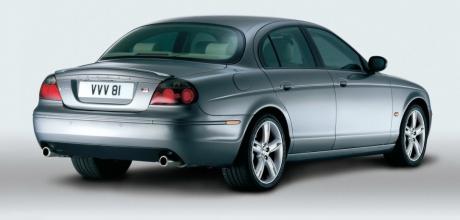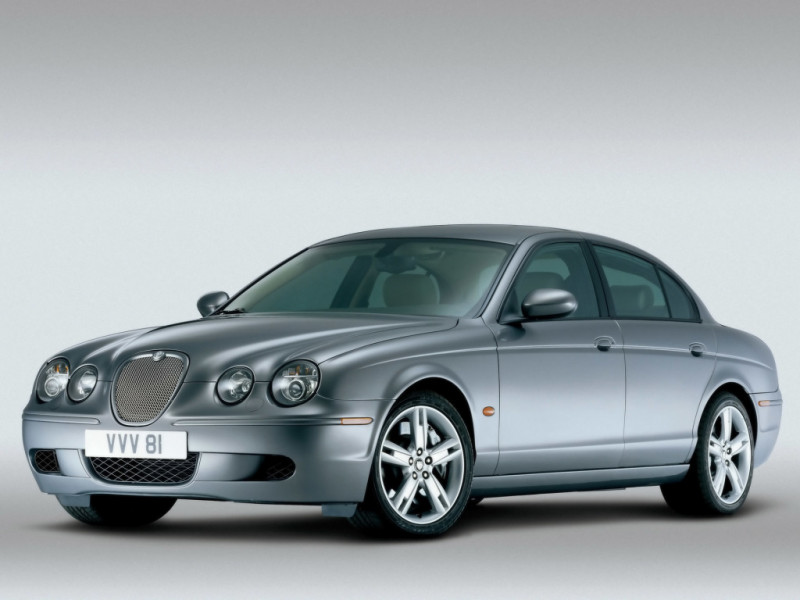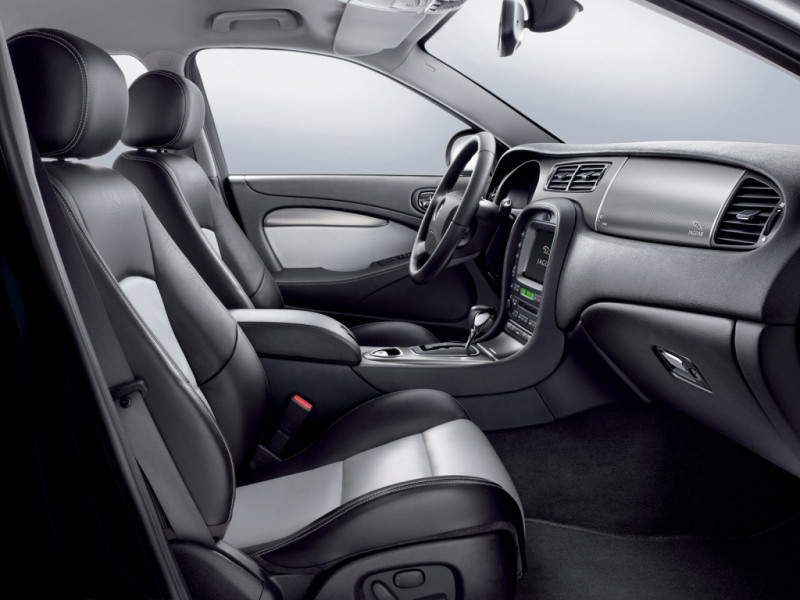Buying guide Jaguar S-Type X200

The Jaguar S-Type X200 is still an affordable prospect but as numbers fall, values are gradually starting to rise. Here’s what you need to know if you fancy a survivor.
WORDS PAUL WAGER
BUYING GUIDE X200 S-TYPE
The affordable modern classic BUYING THE S-TYPE
All the info you’ll need if you’re in the market for the very affordable and very capable X200 S-Type.
As the number of cherished examples declines, the ‘X200’ S-Type is in danger of becoming a footnote in Jaguar history, yet it’s one of the most significant models from the brand’s modern history. Not only was it responsible for lifting Jaguar sales over the 100,000-per-year mark for the first time, but it also demonstrated the potential for the company with the resources of Ford behind it. Yes, the retro styling puts the car firmly in the Marmite camp, but few will deny that under the curves was a state-of-the-art car and indeed the platform was continued into the Mk1 XF range. A good example still feels like a very modern car today and they’re currently something of a bargain too.

Plans for a smaller Jaguar model had been in the works for some time, but the official announcement came in July 1995 when Ford announced that it would invest £500m in the Castle Bromwich plant to build a new smaller model. Even the mighty Ford Motor Company would have baulked at the idea of funding an all-new platform for such a low-volume model and the solution was to use the rear-drive DEW98 platform which was then in development for the Lincoln LS and Ford Thunderbird.
The popular misconception is that Jaguar was simply handed the Lincoln drawings and told to add some wood and leather, but the reality is rather different. As Nick Hull relates in his fascinating title Jaguar Design, engineers from Ford were based at Jaguar’s Whitley development centre in Coventry, while Jaguar engineers also went over to Dearborn. The introduction of networked computer systems meant that the platform was much more of a collaborative development than many realise.
As Hull relates, the differences between the Lincoln and the Jaguar are mainly in the outer skin of the ‘body in white’ but the Jaguar engineers were able to influence the so-called hard points of the design. The result was a lower ‘H point’ (‘hip point’ – a term demoting the height of the front seat cushion), revised crash structure and shorter front overhang. Ford engineers were as keen to access the Jaguar engineers’ ride and handling expertise as the Coventry teams were to utilise the Ford resources.
Back in 1999, the industry journal Design News quoted Jaguar’s then chief programme engineer for the car David Szczupak as explaining that the idea was to develop the high-cost items like crash safety, suspension layout, fuel systems, transmissions and climate control in common to achieve worthwhile cost savings, then endow each model with different ride and handling characters to suit their target markets. Underneath, the rear suspension was by unequal-length wishbones in Jaguar tradition, but the S-Type abandoned the practice of using the driveshaft as the upper link, using instead a cast aluminium wishbone together with a fifth link to control toe angle. The wishbones, differential and anti-roll bar were all mounted on an aluminium subframe in order to improve refinement.
At the front end, the S-Type’s suspension used a Honda-style combination of wishbones and strut, the lower wishbone mountings also carried on a separate aluminium subframe. Speed-dependent variable power steering assistance was also added, alongside modern electronic measures including traction control, electronic brakeforce distribution and optional stability control.
The car’s electrical architecture used a low-voltage data bus system to communicate between various control modules using only a single twisted pair of wires, reducing the weight and complexity of a traditional wiring loom.
The car was launched at the Birmingham International Motor Show in October 1998 and went on sale from March 1999. Just three models were offered: the 3.0 V6 in standard or Special Equipment (SE) trim and the 4.0 V8.
In December 2000 at the Bologna Motor Show, a Sport trim level was added, offering colour-coded exterior, grey veneer inside, stability control and 18-inch ‘Monaco’ wheels. The Sport was available with either V6 or V8 power, the V8 models featuring the adaptive CATS suspension as standard. In March 2002, the V8 was enlarged to 4.2 litres and a 2.5-litre version of the V6 was added to the range. The introduction of the enlarged V8 also coincided with the launch of the S-Type R which belied the retro styling with a formidable 400bhp punch which took the fight to BMW’s identically powered M5 E39. In truth the character of the two cars was very different, but the Jaguar was a credible contender and was seen as the better package by some. Praise indeed in the face of BMW’s famed M division.
The new engine line-up coincided with a minor facelift of the original X200 for the 2003 model year, which added a revised dashboard and centre console with electronic parking brake and a redesigned front grille which incorporated the Jaguar badge. Other mechanical changes included the replacement of the Ford five-speed automatic with a six-speed ZF unit, while the 3.0 V6 engine was uprated to 235bhp and the ignition now used a flip key.
A more extensive facelift under the direction of Ian Callum arrived in April 2004 for the 2005 model year, involving restyled front and rear valances, revised grille, reshaped rear lamps and a reshaped aluminium bonnet without washer jets which were now incorporated into the wipers. At this point Jaguar finally bowed to the inevitable and added a diesel to the range in the form of the 2.7-litre AJD-V6 unit co-developed with PSA. A smooth and torquey unit, it suited the car very well.
The S-Type X200 would be produced in this form until 2007 when it was replaced by the XF but the X200 story wasn’t quite over. That DEW98 platform had proved to be such a success that it was carried over to underpin the new car. It would live on until the XF evolved into its second generation in 2015, at which point it embraced Jaguar’s new aluminium bodyshell strategy.
THE SPECS
The S-Type is more commonly seen in either SE or Sport trim, but over its lifetime it was offered in a bewildering variety of trim levels. Initially, just standard and SE specification were offered on the V6 model, with V8 cars effectively being to SE spec. By 2005, the line-up included SE or Sport trim on the 2.5, 3.0, 2.7 diesel and 4.2 V8, with a standard option available only on the 2.5 V6 and 2.7 diesel. The S-Type R was offered in only one trim level. Here are the main specifications:
- Standard — 2.5/3.0/4.0/2.7 1998-2004
- SE — 2.5/3.0/4.2/2.7 1998-2004
- Spirit — 3.0/2.7 2004-2007
- S — 2.5/3.0/2.7 2004-2006
- SE Plus — 2.5/3.0 2003-2006
- XS — 3.0/2.7 2005-2007
- Sport — 2.5/3.0/2.7 2004-2007
- Sport 200 — 200-off limited edition of 2.5 V6
WHAT TO LOOK FOR
Bodywork
The S-Type may be a modern design but it can suffer badly from a very old-school issue: body rot, specifically in the sills. The difficulty for the buyer is that the plastic covers make it difficult to check, with even presentable-looking cars sometimes hiding significant rot so you’ll have to use your judgement here. The online MoT history will help.
It doesn’t have to be the end of the world though, since repair panels are available and if it’s caught early enough the work needn’t be too costly – with the bonus that the plastic covers can be popped back on to cover the repair neatly without a big paintwork cost. Having said that though, in extreme cases the rot will have spread beyond the outer panels to the inner sills and even the floors, meaning a big job involving much interior stripdown. It’s thought that post-2004 cars suffer less from the issue.
Less critical and more obvious rust issues can surface under the rear screen where water can collect under the sealing rubber, while the bumpers at both ends can rub against the bodywork, with rust setting in once the paint has been worn away. The same issue has also been known at the trailing edge of the rear doors.
Elsewhere, it’s common to see S-Types with cloudy headlight lenses which are a simple DIY fix using a polishing kit and a drill, while misted-up lamp units can be sorted by removing the bulbs and drying them out.
If the beam pattern of the non-HID lamps is poor and light output dire, check that the adjusters haven’t broken up. Like the X-Type, when this happens the bulb is no longer held in position, but it’s possible to use a heat gun and plenty of patience to split the lamp unit open and install new uprated adjusters before glueing it closed again with suitable mastic.
If the paintwork at the trailing edge of the bonnet is damaged, check the wiper arms for play and listen for a clonk during operation signifying wear in the linkage. A complete used assembly is often the cheapest solution.
Engine
The Ford-derived petrol V6s are generally reckoned to be robust units, with problems generally of the irritating rather than catastrophic nature: breather pipes can block, while cam cover and sump gaskets can perish, causing oil leaks. The V8 is similarly reliable and will also suffer from cam cover gasket leaks. If the engine turns a few times before catching then suspect a failing MAP sensor, which again is an easy DIY replacement. Issues with the breather pipe at the throttle body can cause the ‘check engine’ light to come on, but the most common cause is a failed oxygen sensor.
The diesel engine needs more caution, especially on cars which have been driven gently or on lots of short journeys. On the pre-DPF models, the exhaust gas recirculation (EGR) valve can get clogged, while turbo failure isn’t unknown either. The MAF sensor can also fail. If the engine doesn’t idle smoothly, it may be a sign of injector issues, while the upper intercooler hose can also crack.
Engines with a particulate filter suffer from the same issues but also add DPF problems into the mix. Issues largely surround the regeneration, which doesn’t happen if the engine isn’t driven hard enough sufficiently often, but most specialists with the right software can get around the issue and manually force the regeneration. Remember, the MoT test now specifically requires a DPF unit to be present, so removing it isn’t an option. Specialists also suggest the correct grade of oil is critical for the DPF engines, as is the correct level: don’t fill it quite up to the ‘max’ level on the dipstick, since a small amount of diesel may be added each time the DPF regenerates and this will avoid it rising above the maximum.
All the engines use a similar design of coolant header tank which can become brittle with age and fracture at the bleed pipe connection. A replacement part is a sensible pre-emptive solution.
The diesel also has a cam belt at the front and a second belt at the rear driving the fuel pump. The change intervals are 105,000 for the front belt, 150,000 for the rear one or 10 years but many cars will be due at least one belt change.
The catalytic converters on the diesel can also fracture around the flexible mesh section at the mounting flange but it’s possible to repair them by cutting off the broken elbow and fitting a repair piece available from Jaguar which is actually listed for the XF.
Transmission
The five/six-speed manual box isn’t the lightest shift around but the units are pretty robust. The six-speed ZF automatic is a sealed-for-life design, but it’s accepted that an oil and filter change at around 70,000 miles will prolong its life. It’s one for a specialist workshop and at the same time it’s worth checking the plastic gearbox sump for warping and damage.
The automatic diesels use a gearbox oil cooler which shares the engine cooling system and if this fails, coolant can end up inside the box. Symptoms include juddering under load and if you’re lucky, you can catch it before the gearbox is ruined. The differential can also leak oil around the driveshafts but the seals are easily replaced.
Brakes
In most cases it’s a regular system with sliding single-piston calipers at the front and the biggest issue will be rusty steel brake pipes and seized calipers which are a DIY job to sort with an exchange unit. The R uses four-piston Brembo calipers and they’re generally reliable, although if you do have problems new calipers are currently unavailable and used ones are less common, meaning it can be cost-effective to have the unit rebuilt, since pistons and seals remain available.
Perhaps the biggest issue with the brakes surrounds the ABS. A fault code for the front end will generally just be a wheel sensor which is a cheap DIY fix, but at the rear it can get more involved. The reluctor rings are part of the driveshaft and they can either become detached from the shaft or become damaged, sometimes as corrosion forces expansion. Various solutions have been offered involving essentially glueing new rings in place but the proper solution is to replace the driveshaft.
On cars with the electronic handbrake in theory a diagnostic system is required to set the unit to the service position for a pad change but this can be achieved by holding down the button while turning off the ignition to ensure the brake remains off. To retract the caliper piston you’ll need the proper tool to rotate it as you push it back.
Suspension
Low-speed clonks and rattles are often caused by worn anti-roll bar bushes, while woolly handling and uneven tyre wear can be down to wear in the lower mounting bush for the front strut.
Worn bushes in the front reaction arms can be felt at low speed stop-starts and can also cause a shimmy when braking. The nearside bush can deteriorate on diesel models when oil drips on to it from a fractured intercooler pipe.
At the rear, poor handling can be caused by worn bushes in upper and lower arms. A noisy steering column can often be cured by greasing the brass bushes inside the footwell.
Interior
Window regulators that are slow or make a grinding noise will be on their last legs as the cables can fray and jam in the mechanism. Replace them with a used part before the cable snaps.

Door latch mechanisms can also fail, causing the central locking to fail. If the heater only offers maximum hot or cold with nothing between, suspect the heater valve in the cooling system.
Values
You’ll find S-Types at well under £1000 but they’ll definitely fall into the project category. Presentable cars with long MoTs start at around £1500, most of them petrol V6 automatics which at this price level make more sense than tired, miley diesels. Move up to the £2000 mark and diesels with more sensible mileage around the 100,000 mark start to appear.
At this price level it’s still a mixed bag although many will be surprisingly respectable, but at the £2500-£3000 mark there’s a huge choice of colour and spec. Top whack for exceptionally low mileage examples is around £7000.
The regular V8 starts at around £3000, but the supercharged R is a different market entirely with prices starting at £5500.
TECH SPECS
- V6 2.5 / V6 3.0 / V6 4.0 / V8 4.2 / V8 4.2 / V8R / 2.7TD
- ENGINE 2498cc 2967cc 3996cc 4196cc 4196cc 2720cc
- MAX POWER (bhp/rpm) 201/6800 240/6800 281/6100 300/6000 390/6100 204/4000
- MAX TORQUE (lb.ft/rpm) 184/4000 221/4500 288/4300 310/4100 399/3500 321/1900
- TOP SPEED (mph) 140 145 149 155 155 141
- 0-60 mph (secs) 9.4 7.5 6.6 6.2 5.3 8.2
- CONSUMPTION (mpg) 29 26 15 25 23 36
- GEARBOX 5-spd auto ZF 5HP / 5-spd man (post-2002, 6-spd auto, 6-spd man)
- LENGTH (m) 4.9
- WIDTH (m) 1.8
- WEIGHT (kg) 1620 1704 1720 1735 1800 1915
[Figures for automatic transmission]

